 |
| |
| IHRA-Tech
e-Bulletin 16. 3rd July 2020 |
|
|
 |
|
|
|
For as long as connecting rod
manufacturers the world over have been
using blends of aluminum to create
lightweight, high performance rods, said
pieces have lived under constant
scrutiny regarding their long-term
durability and usefulness. Even today,
as technology has advanced light years
beyond what the early aluminum rod
manufacturers believed was possible, it
continues. And while these concerns may
have been warranted decades ago, those
in the industry view them as nothing
more than common myths these days. And
they are myths they’d like to debunk,
once and for all. |
| |
|
|
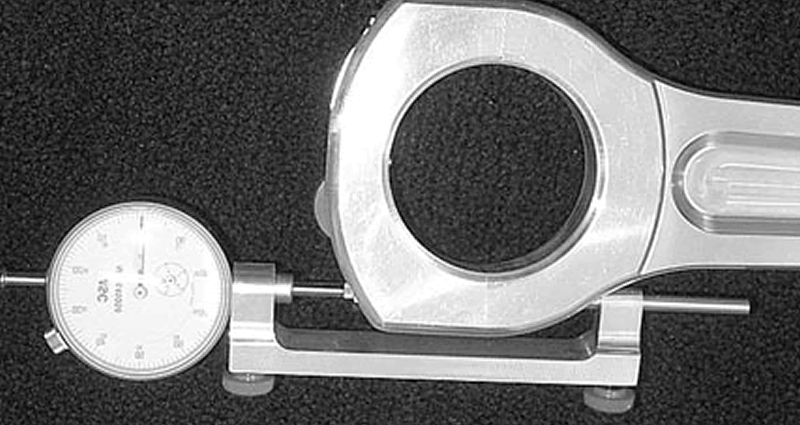 |
|
|
|
GRP Rods is among the industry leaders
in connecting rod technology, and
produces a complete line of aluminum
rods, including those for Pro Stock, Pro
Modified, and HEMI pieces for Top
Alcohol and Top Fuel engines |
| |
|
In order to zero in on the tall tales
surrounding any discussion of aluminum
rods and to help set the story straight,
we placed a call to our good friend
Brian Scollon at GRP
Connecting Rods –
one of the most respected and successful
manufacturers of aluminum rods for the
racing and high performance industry.
Considering their experience in
everything from Top Fuel Dragsters to
muscle cars, suffice it to say, they
know a thing or two about what an
aluminum rod does and doesn’t do. |
|
|
|
Over the years, only a couple of common
myths regarding aluminum rods have stood
the test of time, and while a “couple”
may not seem like that big a deal of a
deal, they strike right to the very core
of the usefulness of aluminum for
construction of such vital components. |
|
|
|
|
|
Aluminum Rods Stretch, You Say? |
|
|
|
From web forums to print magazine
articles, virtually anywhere that
aluminum rods are discussed, you’ll
surely find the topic of rod stretch
somewhere in the conversation. Or to be
more specific, permanent stretching of
the rods. It is the most commonly
discussed “con” of choosing aluminum
connecting rods for an engine, and
according to GRP’s Brian Scollon, is
also purely false in this day and age. |
|
“Everyone out there is under the
impression that aluminum rods
permanently stretch, but this simply is
not the case,” said Scollon. “If
anything, we see that they actually
compress. If there’s something going on,
be it a hydraulic situation or just
simply not enough rod for the power
level, they can compress.” In his 17
years entrenched in the connecting rod
business at GRP, Scollon adamantly
states that not once has he seen an
aluminum rods exhibit signs of permanent
stretching. |
|
|
| |
| |
|
"The amount of time that you can get out
of a rod is completely
application-dependent, and people tend
to group them all into one." |
| |
|
As every engine builder out there is
aware, all connecting rods, regardless
of their material or construction,
stretch under higher RPM use, and
aluminum is certainly no different.
Tolerances for such stretch are
accounted for and combustion chamber
measurements are planned out accordingly
depending not only on the material, but
the process (billet, forged, cast). As a
general rule of thumb, aluminum rods
tend to stretch less than .010″ more
than a steel rod. Thus, if you’re
setting the deck of a Big Block for
.050″ total piston to head, you’ll want
to provide clearance for .060″ when
utilizing aluminum rods. GRP actually
tests such occurrences in-house by
dropping their rods in boiling oil and
measuring the growth. |
| |
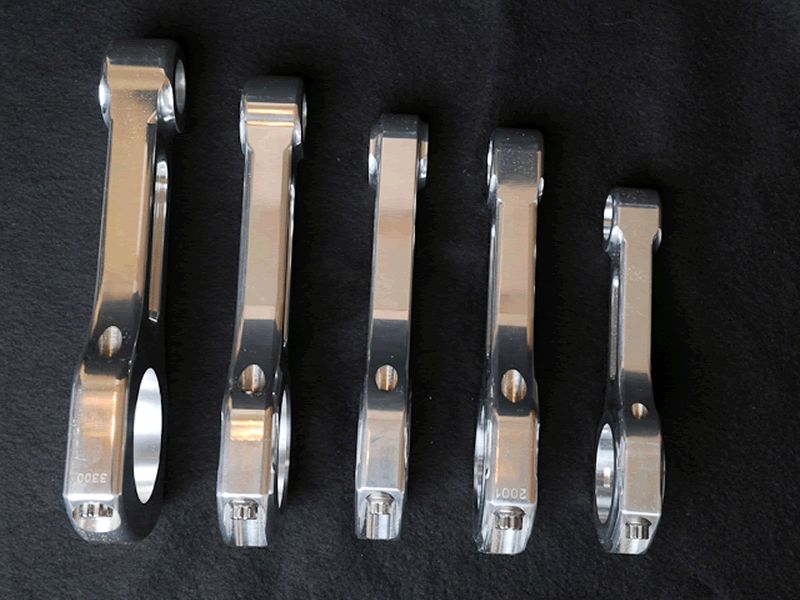 |
| |
|
All connecting rods stretch under high
RPM use, and aluminum rods will tend to
stretch .010″ more than steel with all
other variables being the same. |
| |
|
This expansion that aluminum rods endure
is attributed to the inherent thermal
expansion of aluminum as a material more
so than high RPM movement. “We’ve been
hearing it for years, and have just
never understood where that myth is
coming from,” explains Scollon. “Some
say that back in the early days with the
old rods and some of the other original
aluminum rods use to stretch, but they
don’t do that anymore.” |
| |
|
Life Insurance |
| |
|
Another common topic that many folks
commonly misstate or underestimate is
the overall life of aluminum connecting
rods. Sure, on average, aluminum rods
tend to carry a slightly shorter life
expectancy than steel and other
materials, but many out there would have
you believe that you’ll be chucking a
set of rods in your bracket racing
engine every few passes like a nitro
car. Scollon insists that this too is
simply a misconception. |
| |
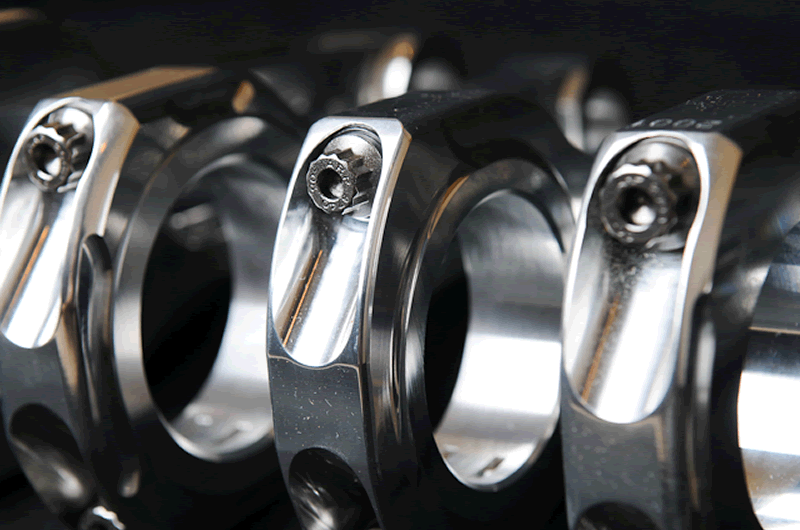 |
| |
|
While more extreme applications tend to
deliver shorter lifespans on an aluminum
rod, milder bracket racing applications
can expect hundreds and hundreds of
passes out of a set of such rods. This
of course is another common and
unsubstantiated myth. |
| |
|
“The amount of time that you can get out
of a rod is completely
application-dependent, and people tend
to group them all into one,” says
Scollon. “A guy will call us to order
rods for a bracket car and someone has
told him he can only run an aluminum rod
25 passes before it needs to be
replaced. That may be the case in a
nitro or blown alcohol car, but in
something milder, you can get hundreds
and hundreds of passes out of them.” |
|
What it essentially comes down to (and
such is the case with all sorts of
components), is selecting a rod that’s
built for the combination. Even steel
rods, while certainly carrying a longer
life expectancy than aluminum, won’t
last long if a proper part for the
horsepower isn’t chosen. |
|
In nitro engines, the compressive load
placed upon the rods on the top end of
the track is extreme to say the least,
limiting their use to 8-10 passes at
best. Blown alcohol and Pro Stock
engines meanwhile, put a different form
of extreme stress on the rods thanks to
rotations at or above 10,000 RPM. For
these racers, however, the performance
benefits outweigh the cost and
maintenance. |
| |
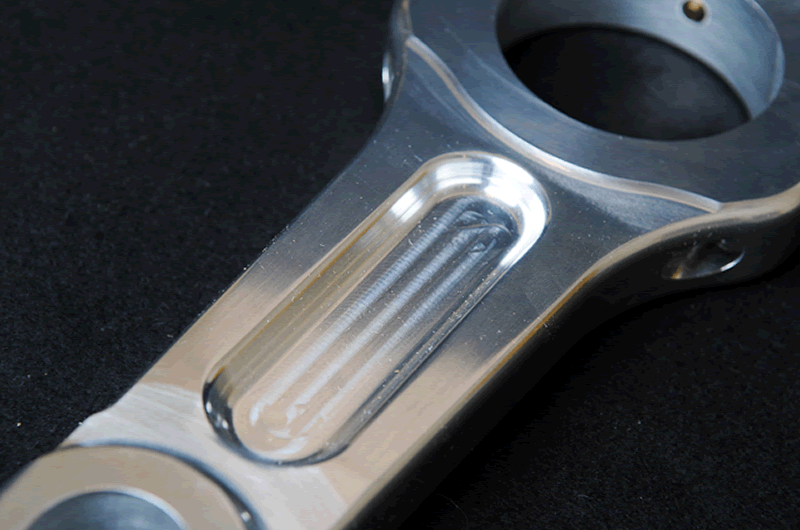 |
| |
|
Aluminum rods in nitro engines will
typically last no more than 8-10 runs,
thus the reason for teardowns for
inspections or replacements between each
pass. |
| |
|
But for the weekend warrior bracket
racers out there who would be most
concerned about connecting rod life,
Scollon explains that it’s nothing for a
customer to put several hundred to a
thousand-plus passes on a set. |
| |
|
Flexing Their Muscles |
| |
|
Think steel rods are stronger than
aluminum? Aluminum rod manufacturers
would beg to differ. “The topic of
overall strength is also very
application-dependent, but can we build
an aluminum rod stronger than a stock
steel rod? Absolutely,” Scollon
exclaims. |
|
|
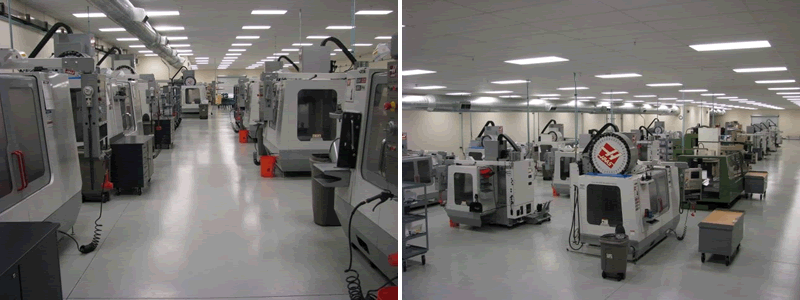 |
|
|
|
GRP's impressive manufacturing facility
in Denver, Colorado. |
|
|
|
Scollon continued, “If you take a look
at the horsepower levels of Top Fuel,
Pro Modified and anything of that nature
that’s very high horsepower, it’s going
to have aluminum rods in it. So it
almost seems to be the other way around;
that aluminum can take more than steel.”
Calling aluminum stronger than steel,
however, isn’t necessarily a fair
assessment. As Scollon explains,
aluminum isn’t stronger per se, but it
endures the application better by acting
as a shock absorber in powerful engines
that need it. So you may be asking at
this point how aluminum could be
stronger in some cases, yet steel lasts
considerably longer. |
|
“If the power level of the application
is actually taking the rod past it’s
“fatigue life” or the power limit or RPM
limit of the rod, it’s going to reduce
it’s life, regardless of the material.” |
|
|
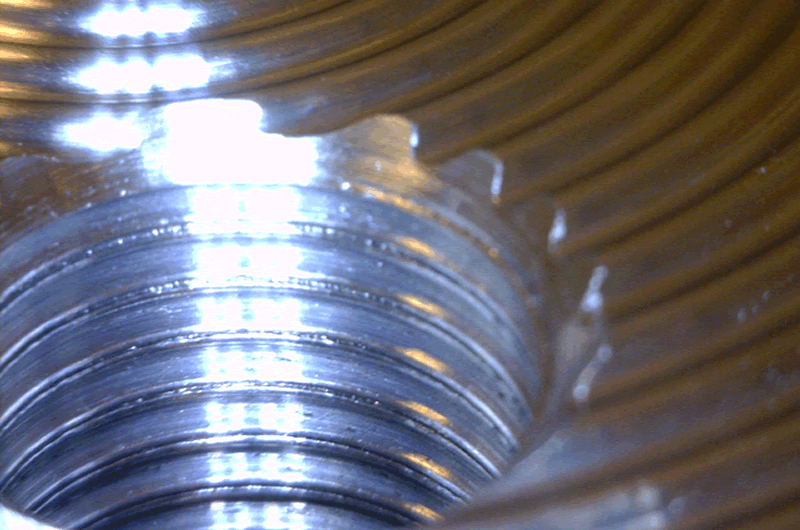 |
|
|
|
Aluminum rods, while not stronger than
steel rods per se, act as a shock
absorber of sorts in high horsepower
engines, thereby enduring the forces
placed upon it better than steel. |
|
|
|
If we step away from high horsepower
combinations where aluminum is the de
facto choice and focus on
middle-of-the-road bracket racing
engines, GRP and others in the industry
believe aluminum has every bit the shelf
life that steel does. But is aluminum a
great choice for everything? “Absolutely
not,” states Scollon. |
|
|
|
It’s the aforementioned lighter rotating
weight and shock absorbing tendency of
aluminum that makes these rods a
no-brainer for high horsepower, high
RPM, boosted applications and the like.
But in street engines, which are
classified as low load applications
where one might wish to get 100,000
miles or more from their engine,
aluminum rods are considered an
unnecessary risk of eventual failure
over the course of time. Ever the
salesman of their products, many
aluminum rod manufacturers themselves
will steer street car-inquiring
customers in the direction of steel,
even if it means losing a sale. |
|
|
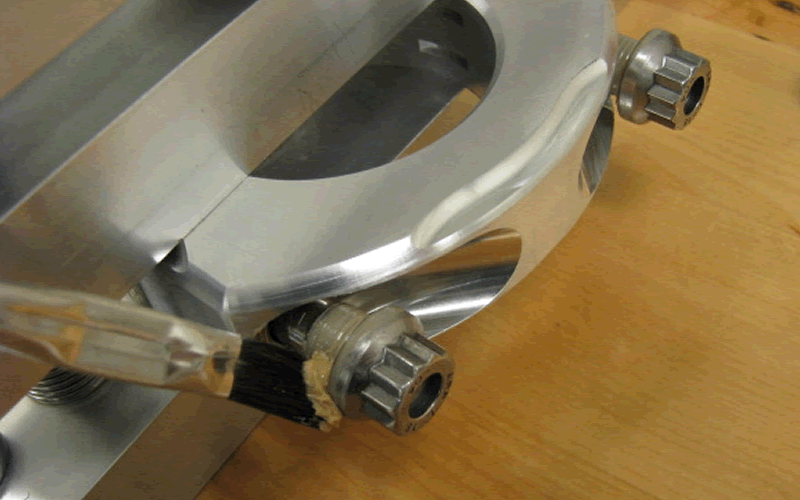 |
|
|
|
“Absolutely not,” states Scollon when
asked if aluminum rods are good for
every application. The debate rages on
in regards to their use in street cars,
where some love them, and some wouldn’t
even try it with your engine. |
|
|
|
And so the debate rages on concerning
the use of aluminum rods in a street
engine. Scour the ‘net and you’ll find
plenty of examples of mild street
engines containing aluminum connecting
rods with thousands upon thousands of
hard, stop-and-go miles on them without
fault, only further fueling the
never-ending debate amongst enthusiasts
and engine builders. |
|
|
|
But for the vast majority of
combinations specifically intended for
racing use, and despite all of the tall
tales and myths that you’ve heard,
aluminum rods get the job done, and it’s
our hope that this piece will in some
way help further educate those sitting
on the fence in their selection of steel
or aluminum connecting rods in their
race engine to make the proper decision
for their needs and pocketbook. |
| |
| By ANDREW WOLF |